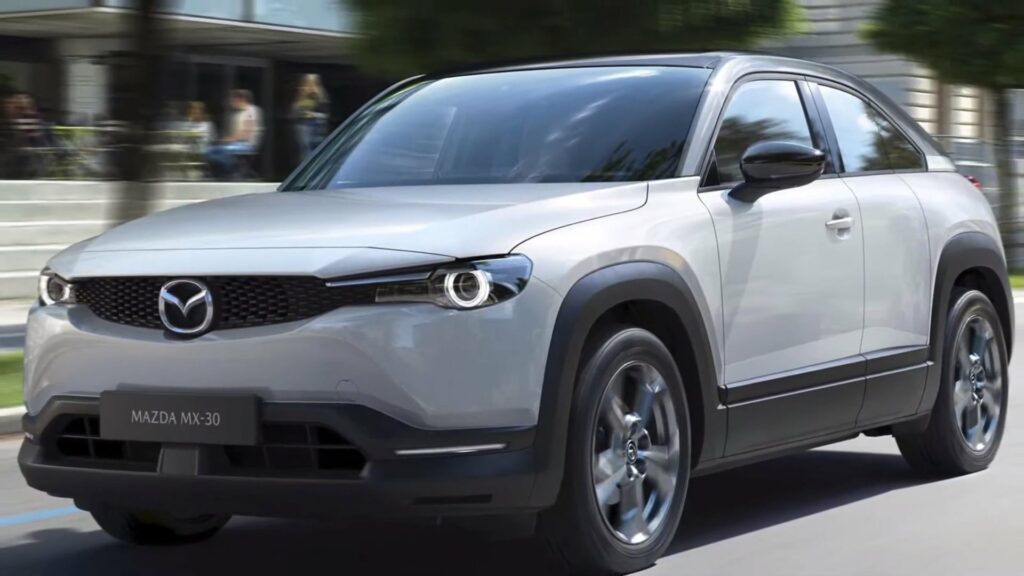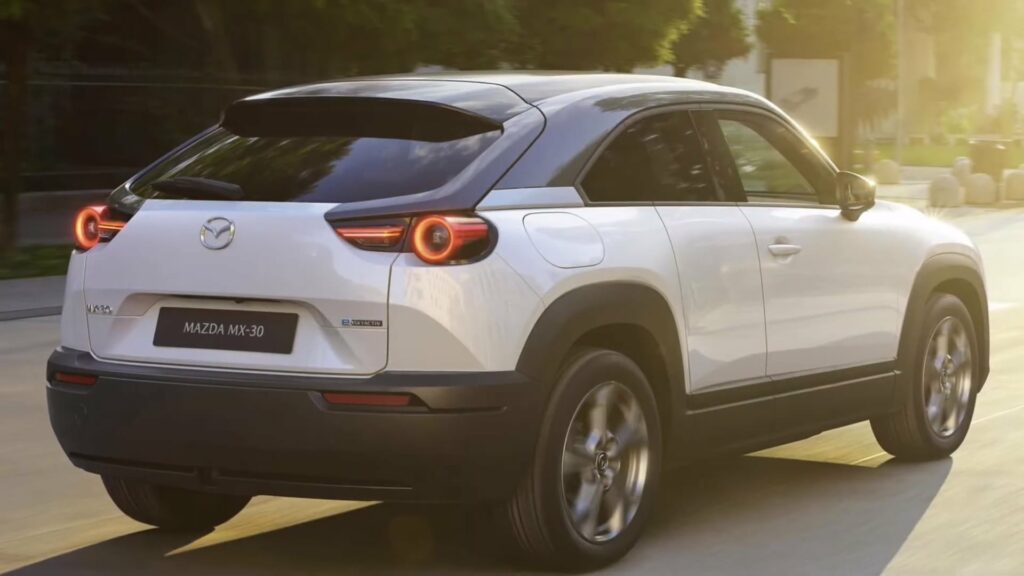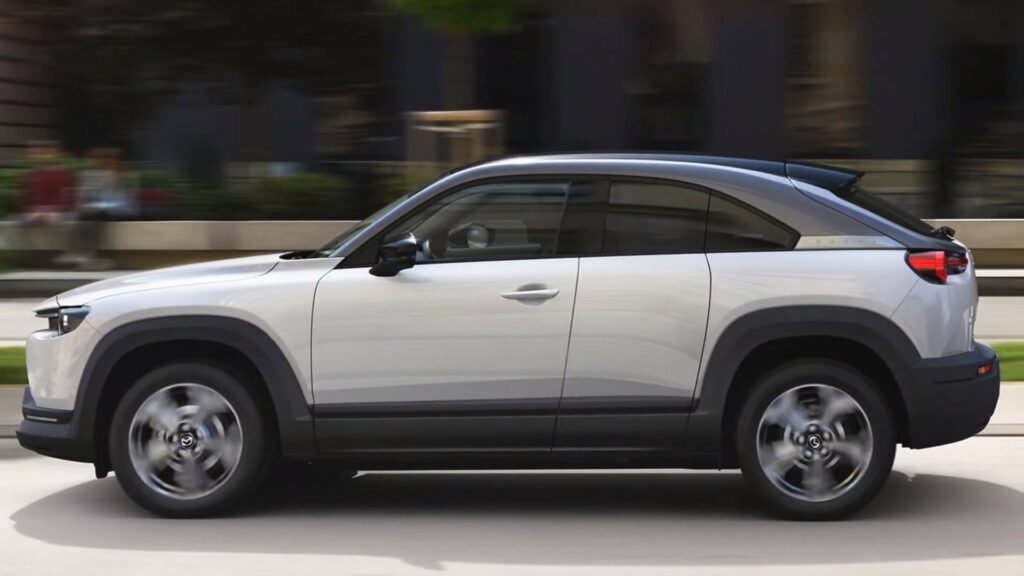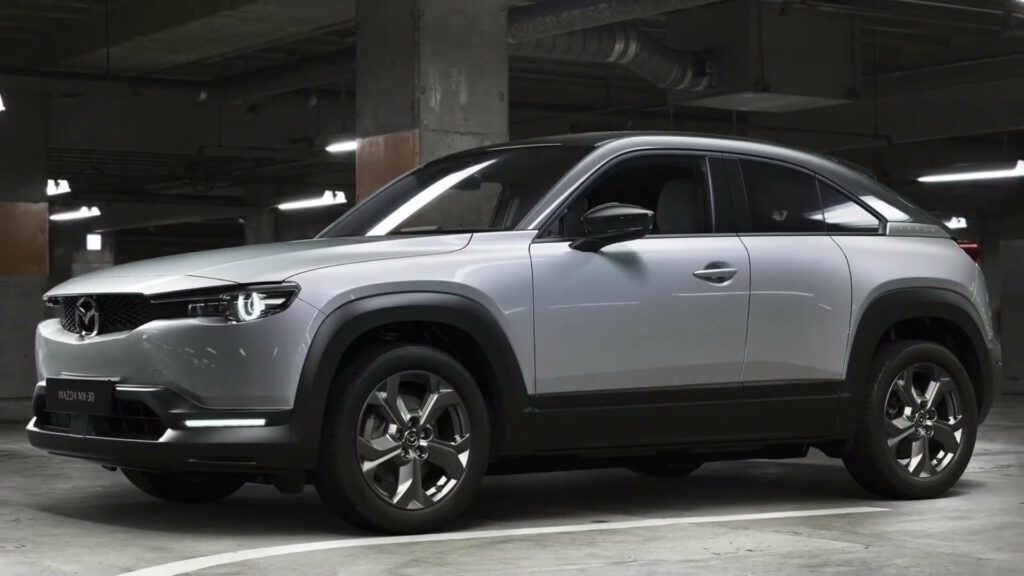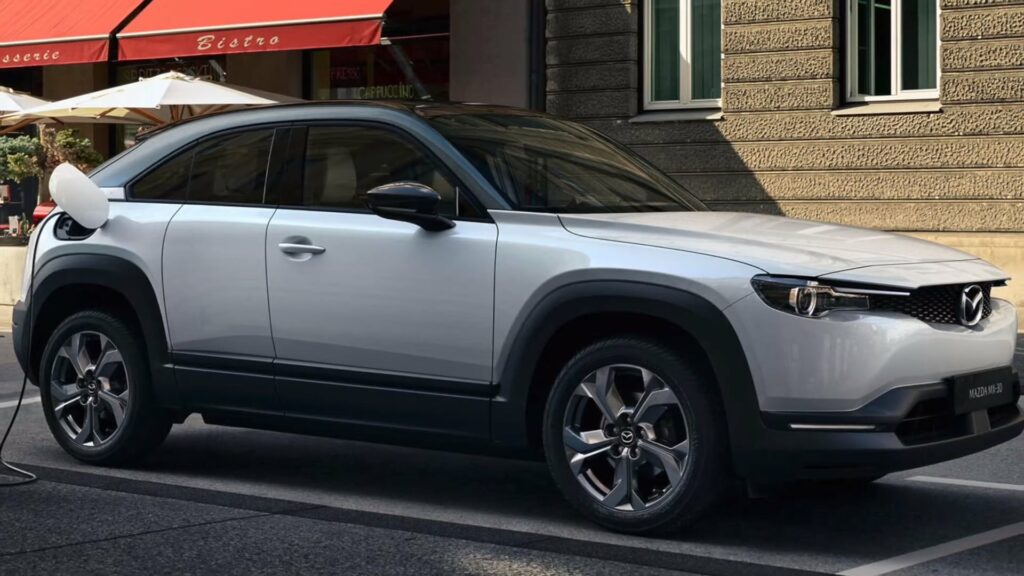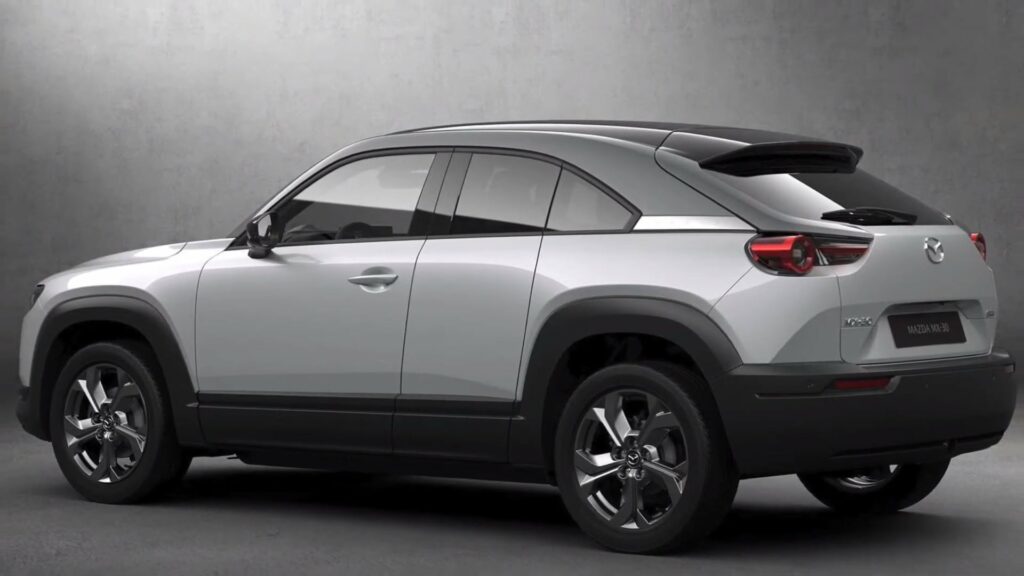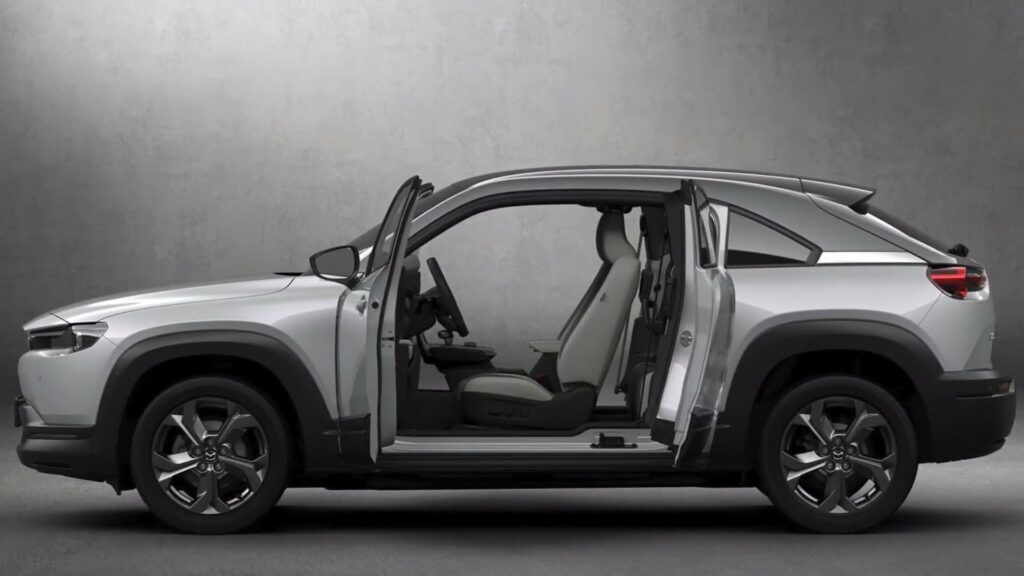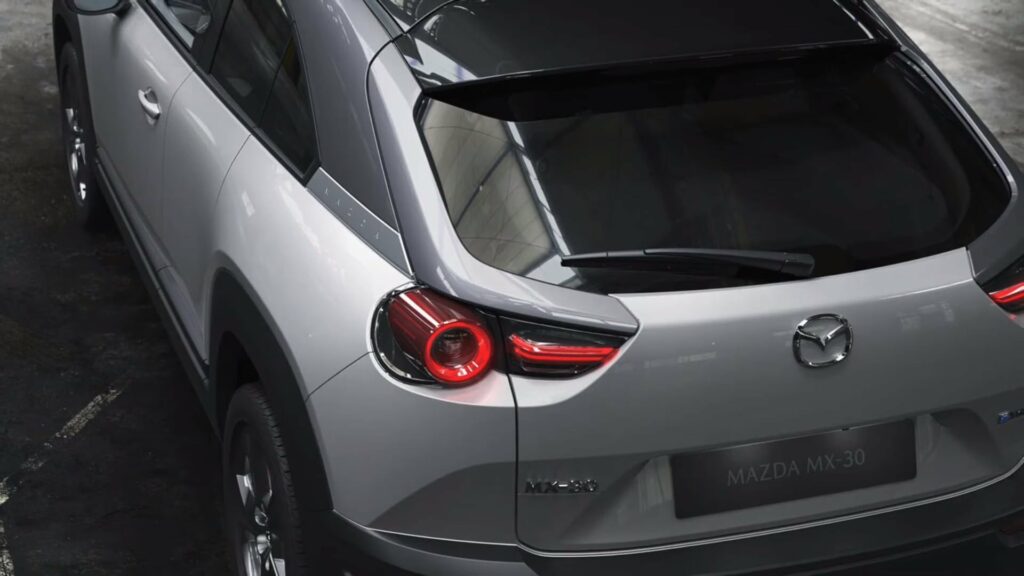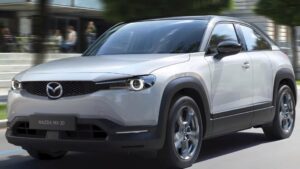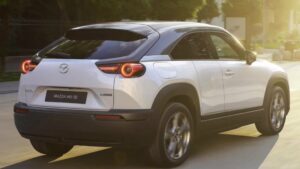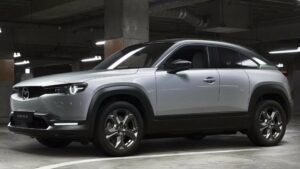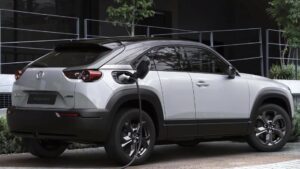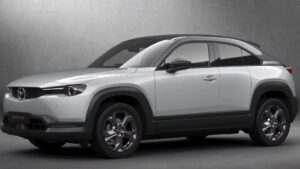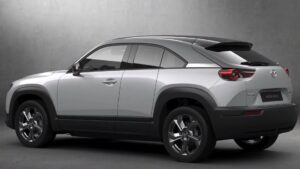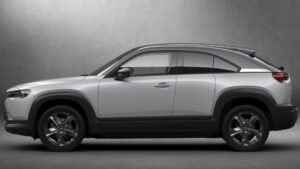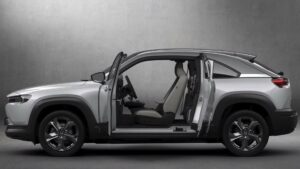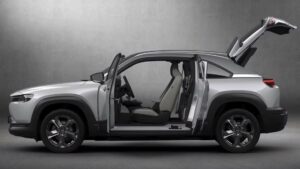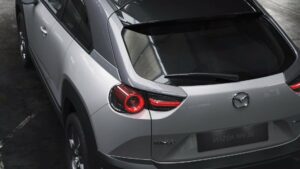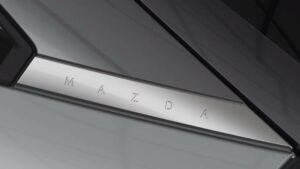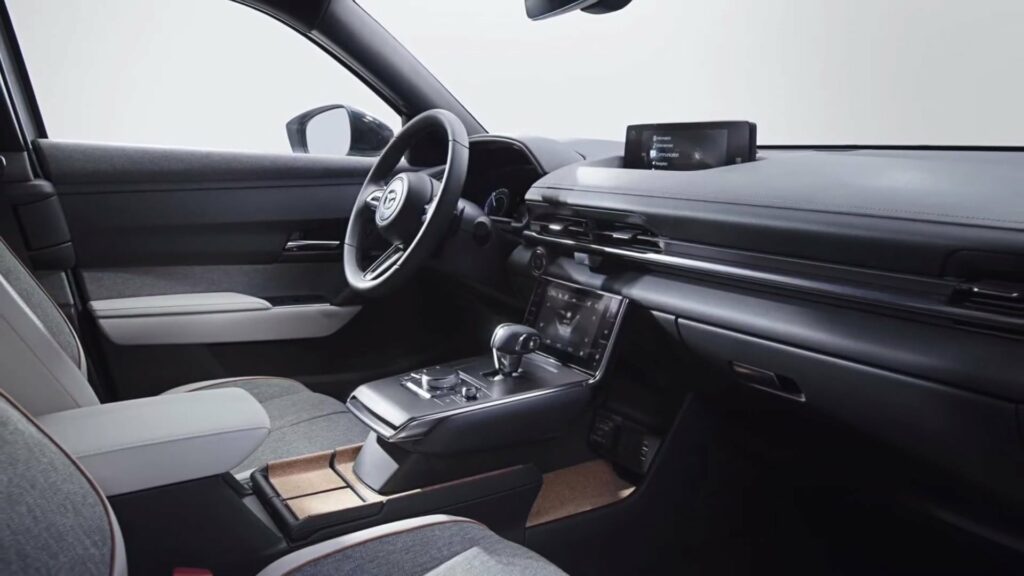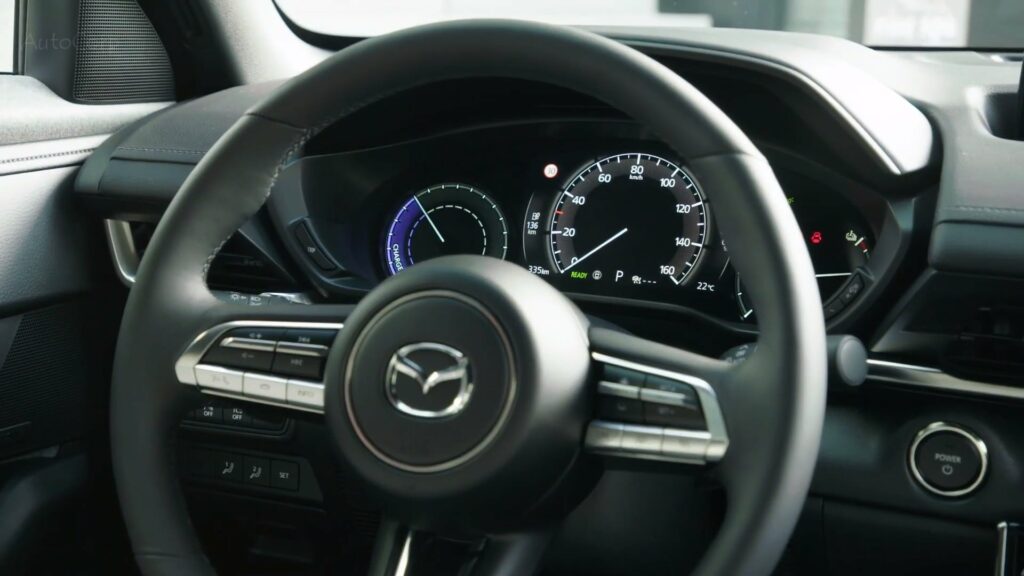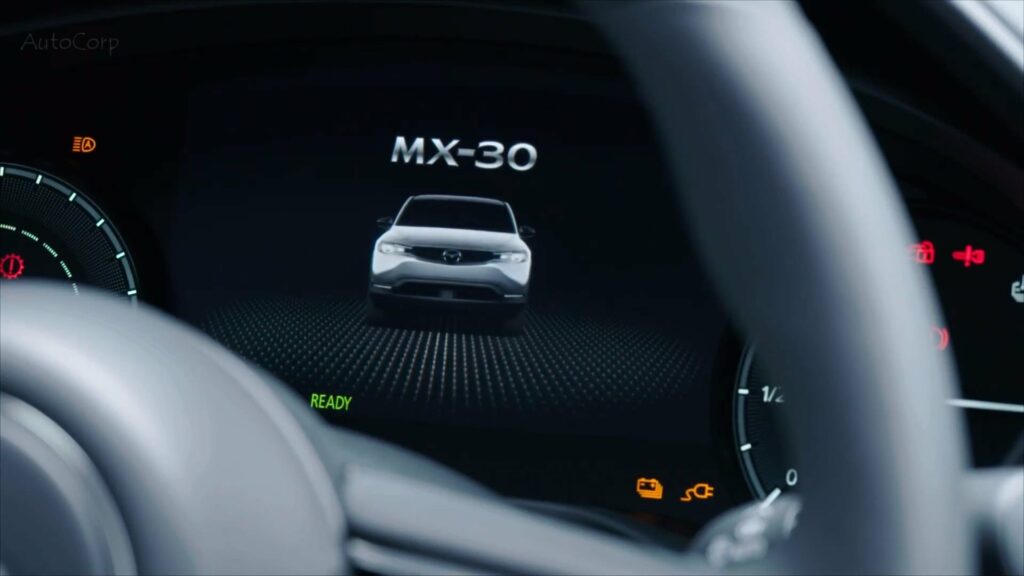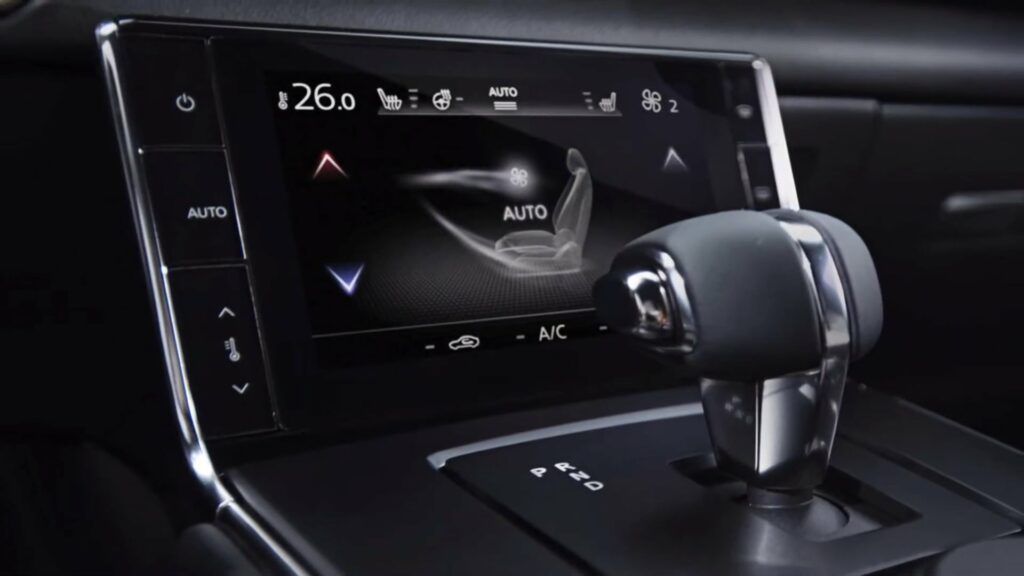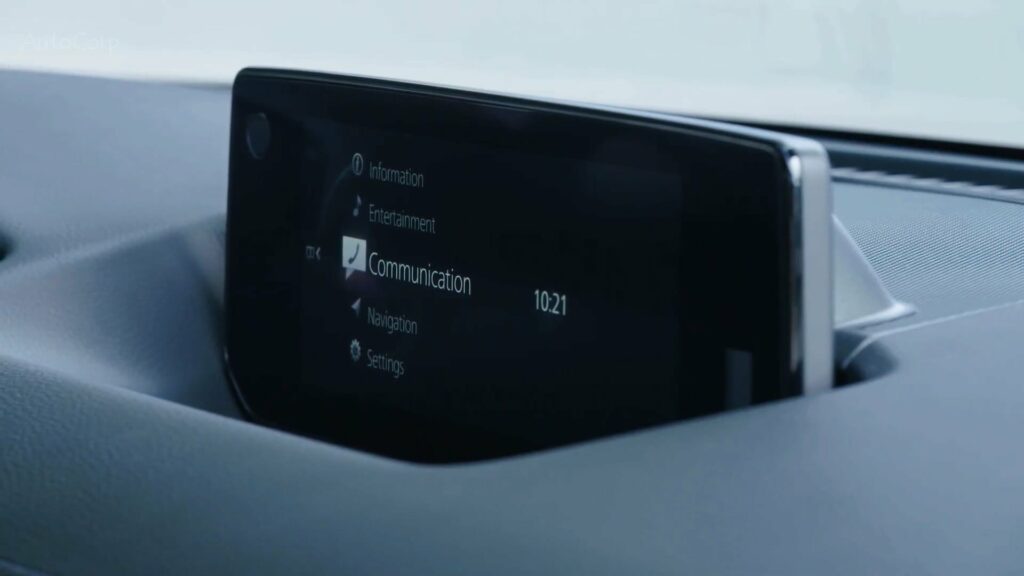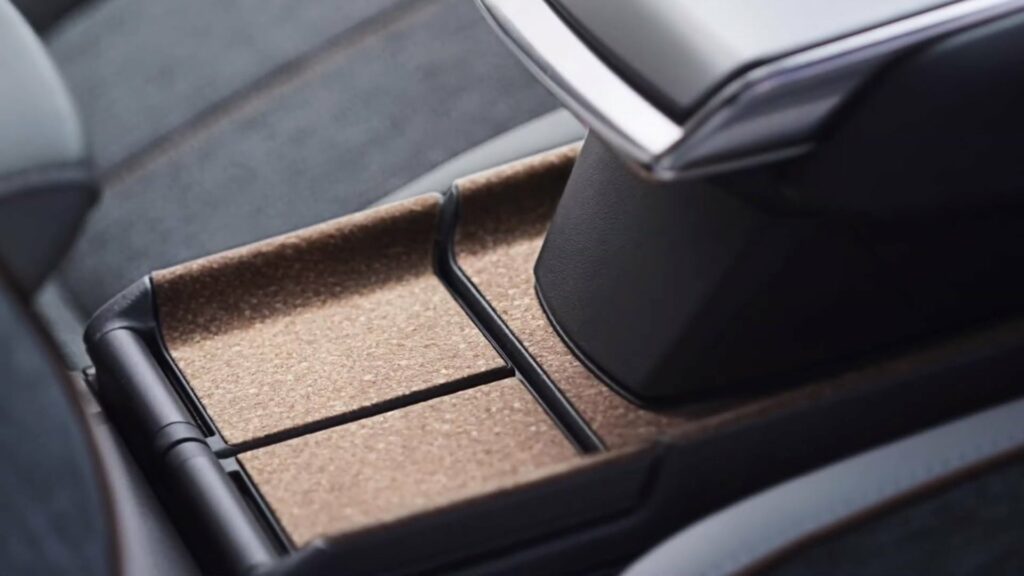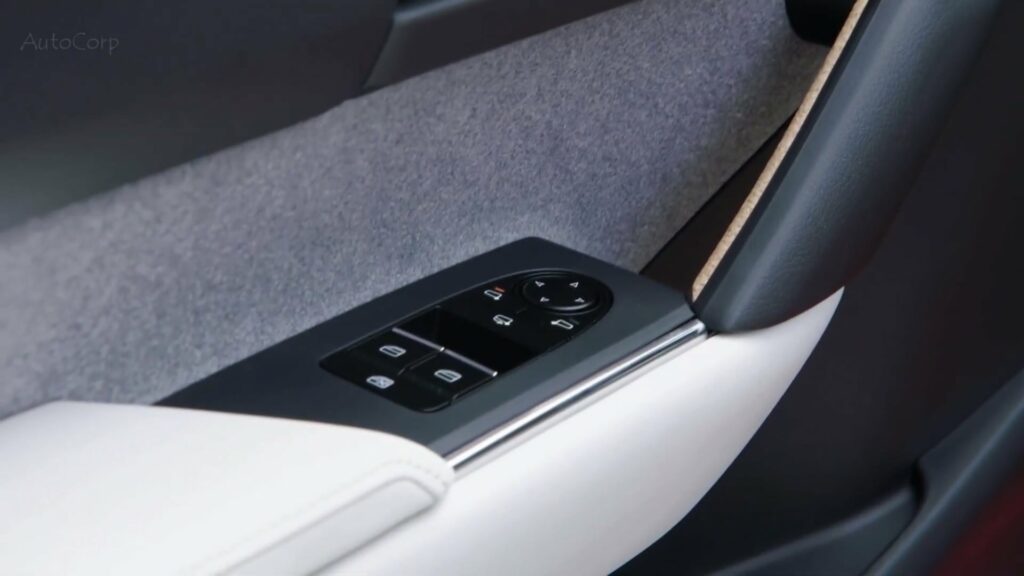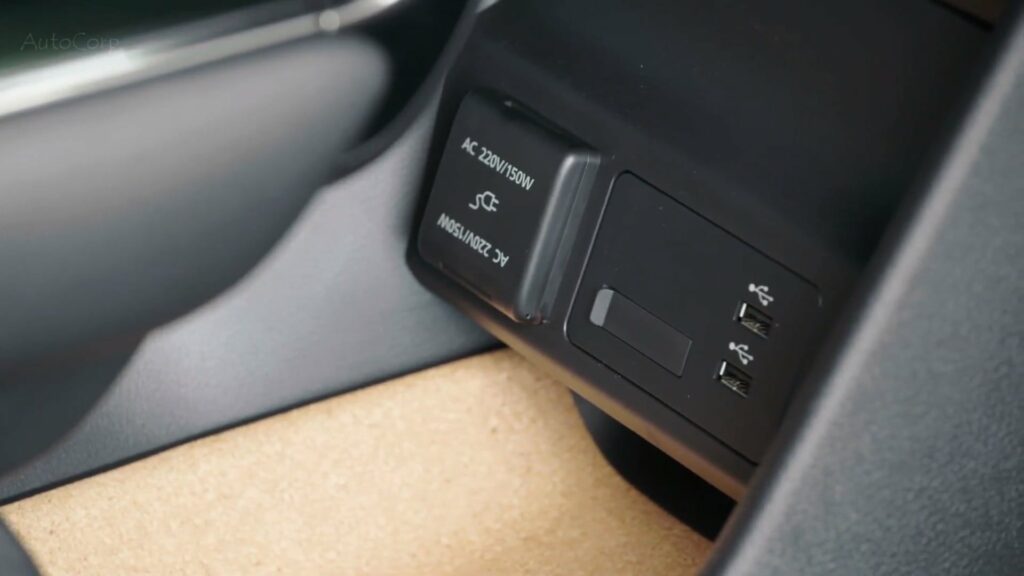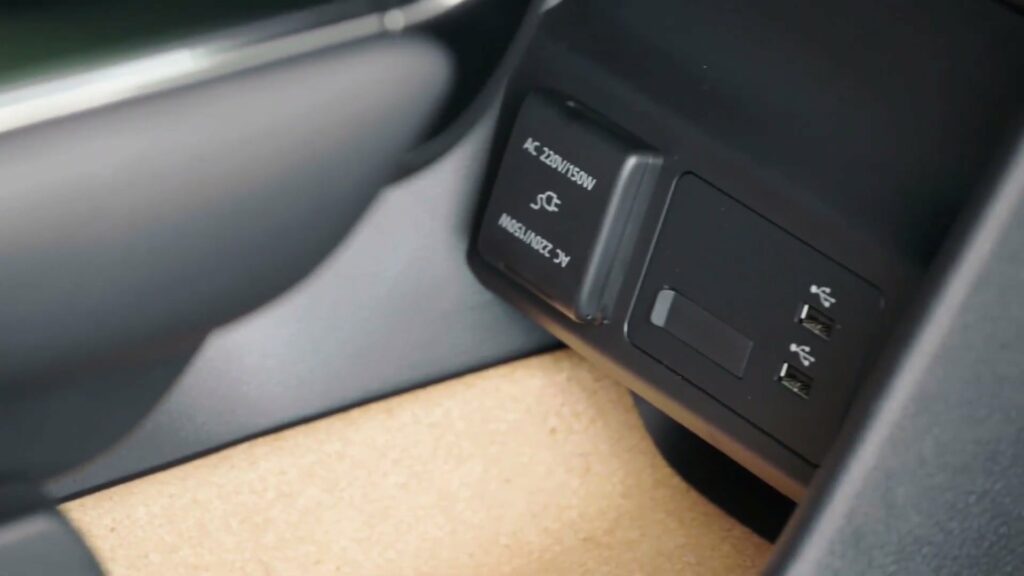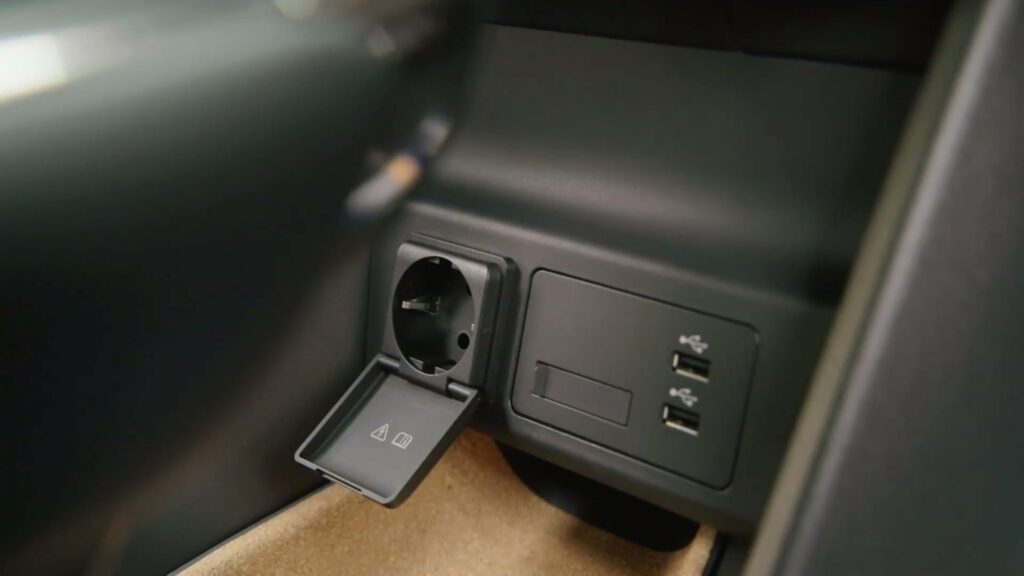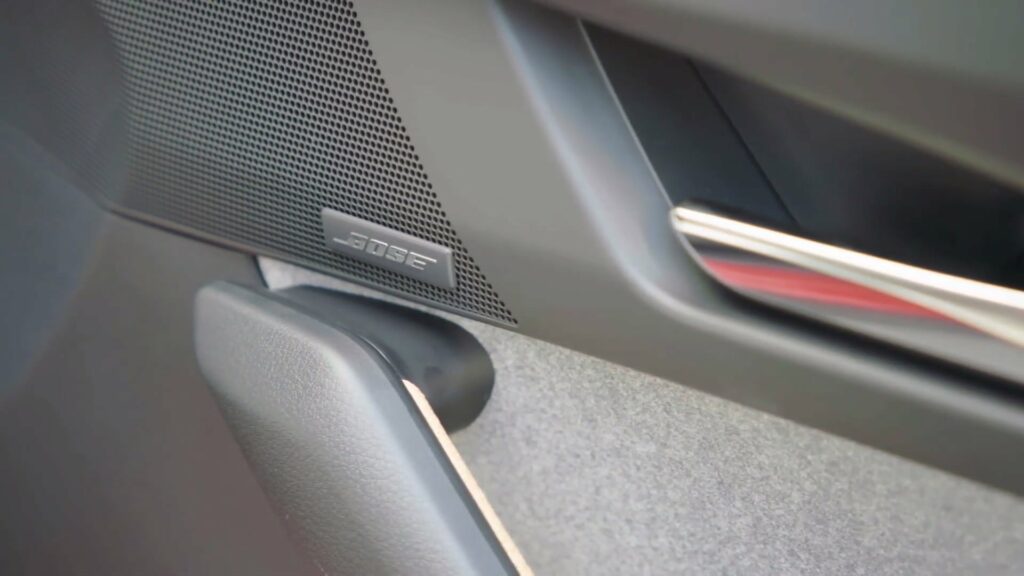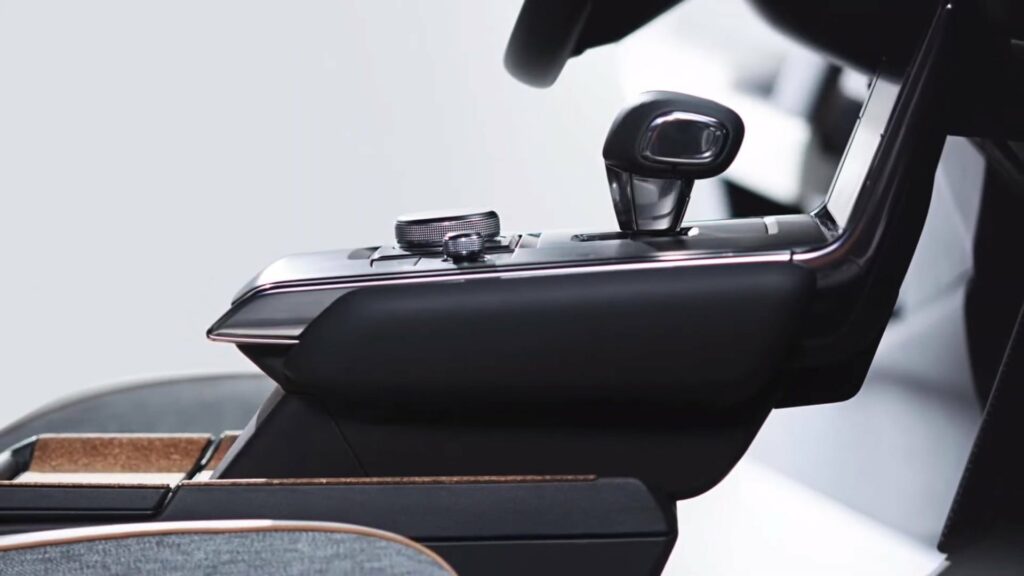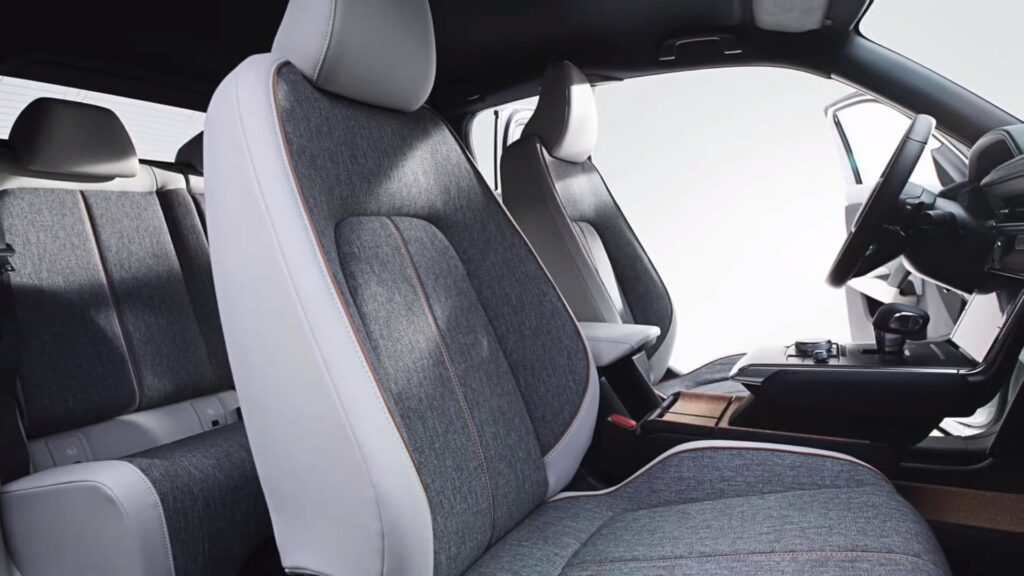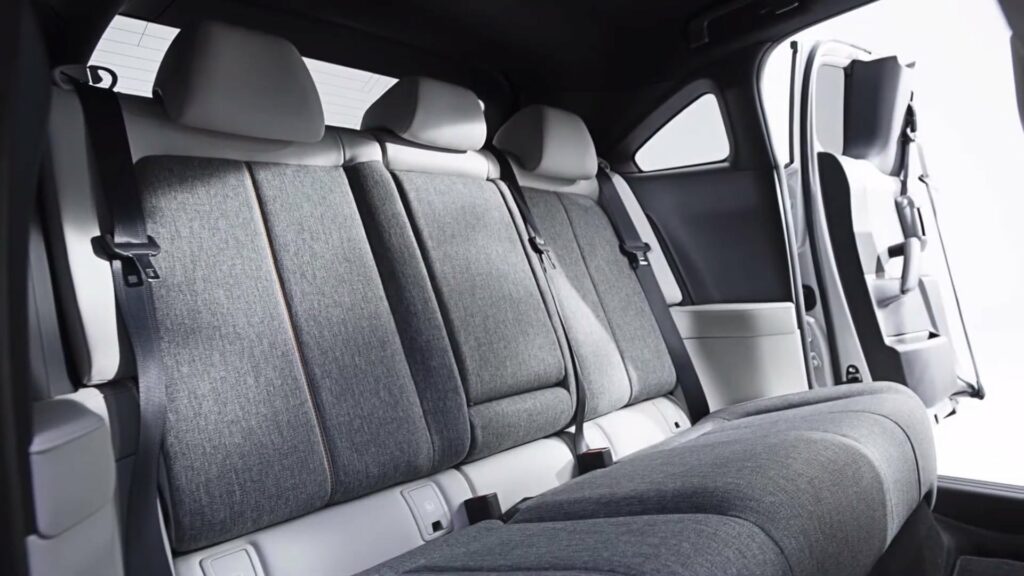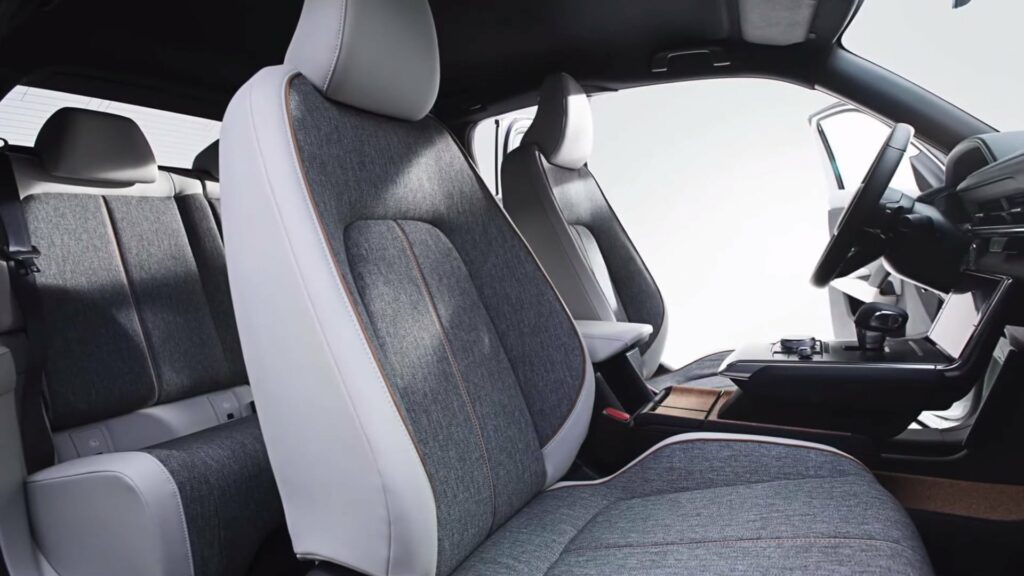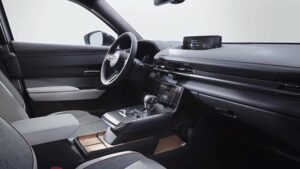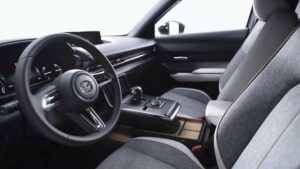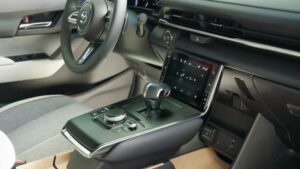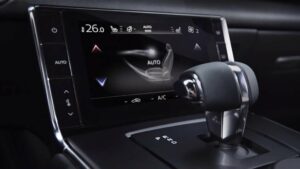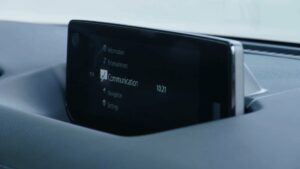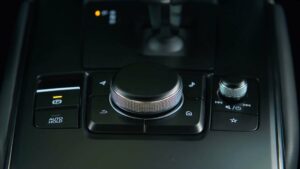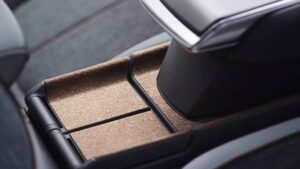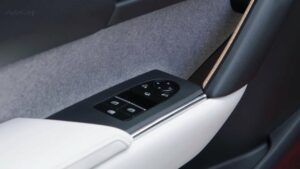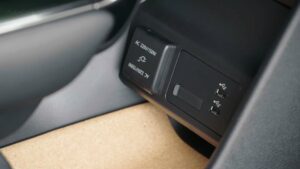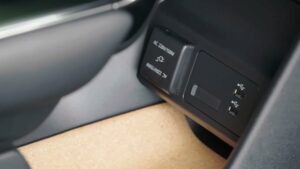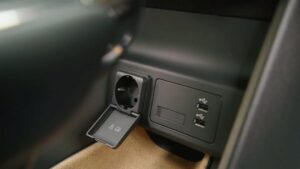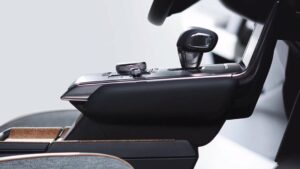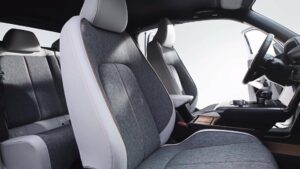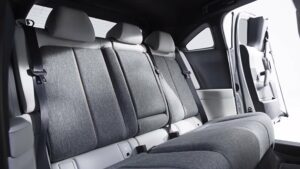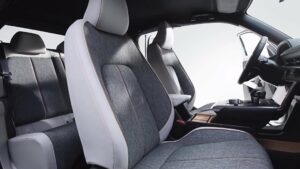Mazda MX-30
Mazda MX-30 is an electric car of the Mazda brand, presented in the body of a compact crossover. The electric car is focused on the global car market and is intended to be the company’s pioneer in the industry segment that is new to it.
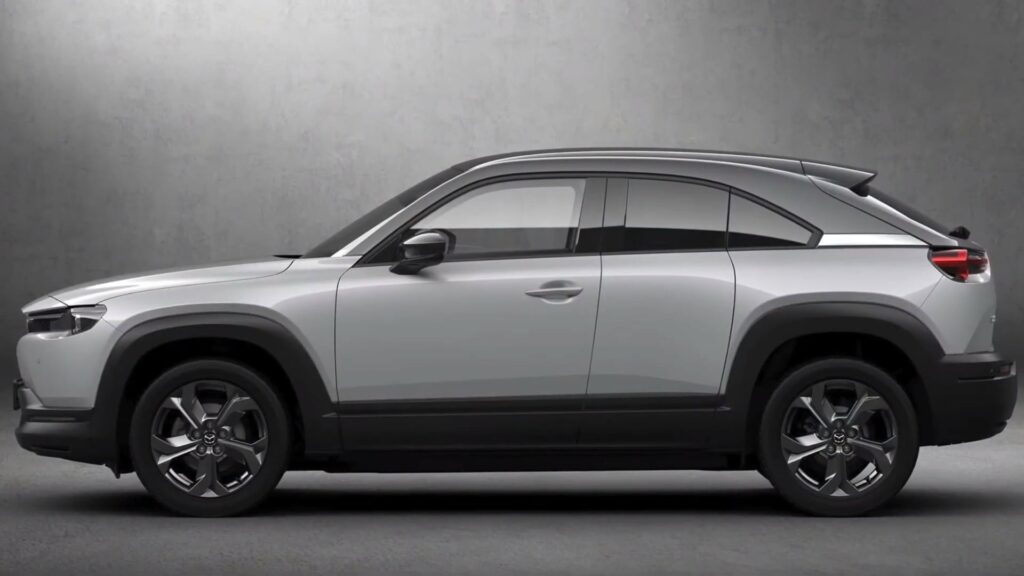
The Mazda MX-30 features an innovative electric powertrain called e-SKYACTIV, which combines the motor, inverter, and junction box into one high-voltage unit that is mounted at the front of the car. The transmission is rated at 105 kW (142 hp) with 265 N⋅m of torque.
The electric car is equipped with a 35.5 kW⋅h lithium-ion battery with a total voltage of 355 V, which offers a range of 210 km on the WLTP cycle. The battery can be charged at 50 kW fast charging stations (CCS Combo or CHAdeMO, depending on the region) as well as from 6.6 kW AC power sources. The Mazda MX-30 battery pack has an advanced refrigerant cooling system.
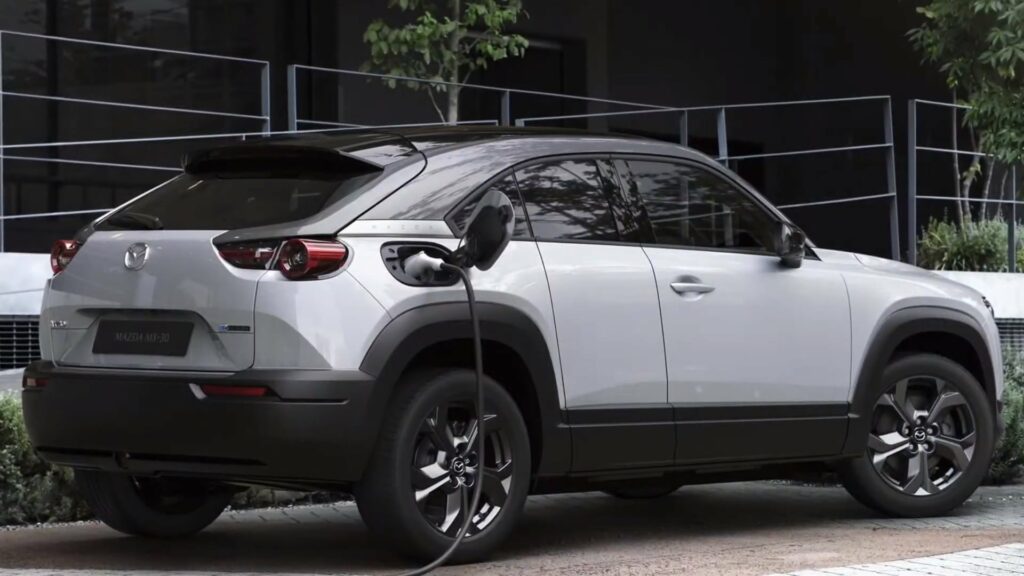
The exterior design of the electric car cannot be called overly original, as modern Mazda styling can be guessed in every detail. Nevertheless, the car was created in accordance with Mazda’s new design phase, Kodo – Soul of Motion, which positions the car as a piece of art.
The main emphasis of the Mazda MX-30 is on the lightness and compactness of the model, probably the designers of the company associate the car with the electric powertrain with this.
The car is absolutely not brutal, but rather friendly and focused on a young audience.
Of the features that are immediately visible on the exterior, we note the hinged half-leaf rear doors. Quite an original solution, which is true already has one of the electric car competitors, and also met earlier in the model range of Mazda itself.
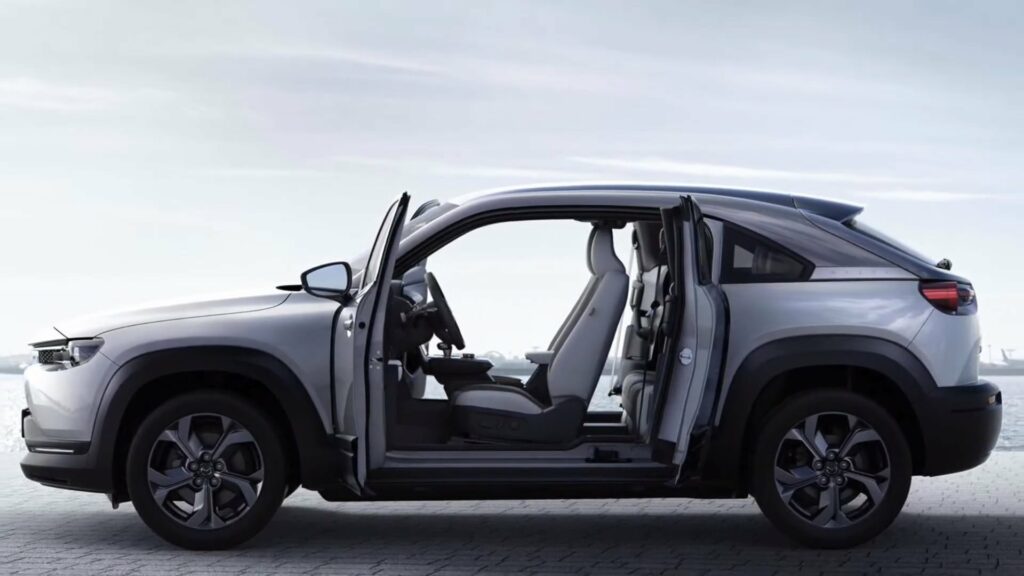
Inside the car, engineers and designers paid attention to the technological aspect of the design. Despite the fact that there are no revelations in the design, in the cabin, the car is perceived as an innovative product with well-thought-out ergonomics. The developers have proposed a new solution for the torpedo and the central tunnel, allocating them to several levels and forming a kind of “floating console”. Taking into account the instrument panel in the electric car as many as 3 displays, a pleasant and understandable layout of control systems.
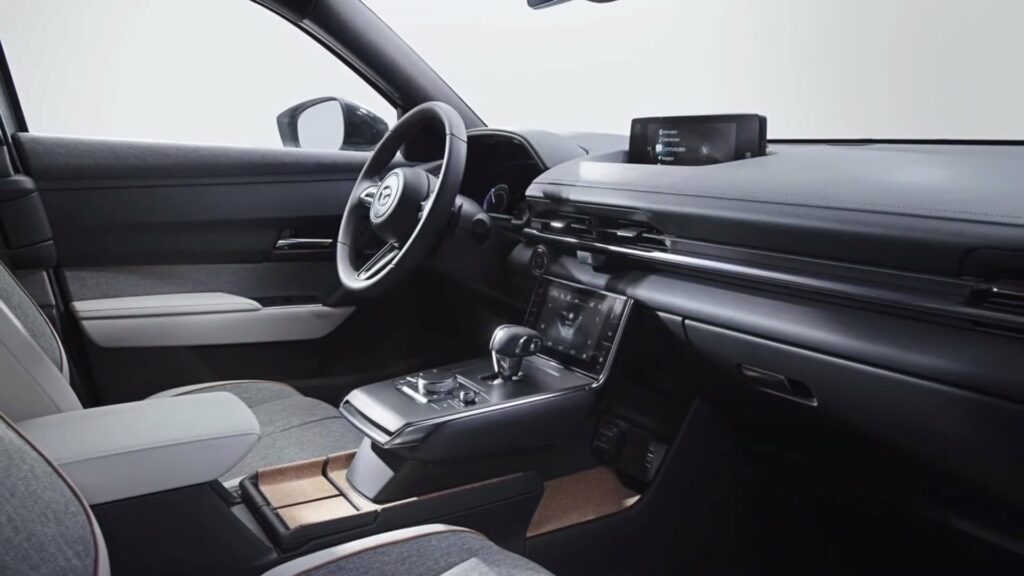
It is clearly seen that the designers worked in detail on the texture of the interior design, in particular the design of door cards, which are made of fiber material with texture, in order to emphasize the airiness and environmental friendliness of the car. In the console of the central tunnel, a special material Heritage Cork is used to creating a special warm atmosphere in the cabin.
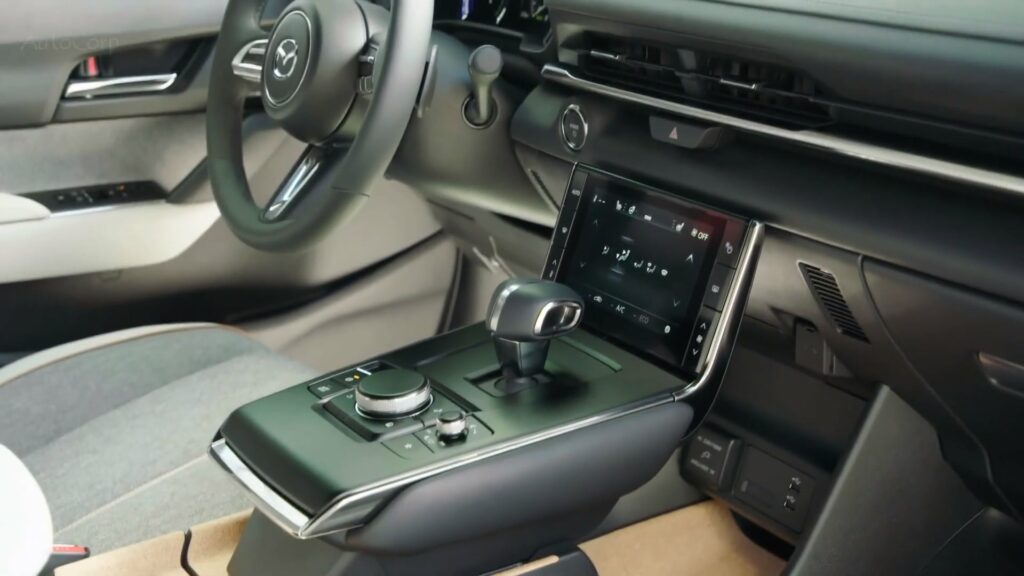
Overall, the entire interior is imbued with an eco-friendly spirit and is dominated by natural gray tones. Fibers from recycled plastic bottles are used in the door trim, and the wood décor is made from harvested tree bark without cutting it down.
The MX-30 features the i-Activsense safety system, with the most advanced driver assistance features such as collision avoidance (Smart Brake Support) or keeping the car in its lane (Road Keep Assist and Blind Spot Assist).
| Performance | |
| Acceleration 0 – 100 km/h | 9.7 sec |
| Top Speed | 140 km/h |
| Electric Range | 170 km |
| Total Power | 105 kW (143 PS) |
| Total Torque | 265 Nm |
| Drive | Front |
| Battery and Charging | |
| Battery Capacity | 35.5 kWh |
| Battery Useable* | 30.0 kWh |
| Europe | |
| Charge Port | Type 2 |
| Port Location | Right Side – Rear |
| Charge Power | 6.6 kW AC |
| Charge Time (0->170 km) | 5h30m |
| Charge Speed | 32 km/h |
| Fastcharge Port | CCS |
| FC Port Location | Right Side – Rear |
| Fastcharge Power (max) | 37 kW DC |
| Fastcharge Time (17->136 km) | 39 min |
| Fastcharge Speed | 180 km/h |
| Energy Consumption | |
| EVDB Real Range | |
| Range | 170 km |
| Vehicle Consumption | 176 Wh/km |
| CO2 Emissions | 0 g/km |
| Vehicle Fuel Equivalent | 2.0 l/100km |
| NEDC Ratings | |
| Range | 237 km |
| Rated Consumption | 173 Wh/km |
| Vehicle Consumption | 127 Wh/km |
| CO2 Emissions | 0 g/km |
| Rated Fuel Equivalent | 1.9 l/100km |
| Vehicle Fuel Equivalent | 1.4 l/100km |
| WLTP Ratings | |
| Range | 200 km |
| Rated Consumption | 190 Wh/km |
| Vehicle Consumption | 150 Wh/km |
| CO2 Emissions | 0 g/km |
| Rated Fuel Equivalent | 2.1 l/100km |
| Vehicle Fuel Equivalent | 1.7 l/100km |
|
Rated = official figures as published by manufacturer. Rated consumption and fuel equivalency figures include charging losses.
|
|
|
Vehicle = calculated battery energy consumption used by the vehicle for propulsion and on-board systems.
|
|
| Real Energy Consumption between 118 – 250 Wh/km | |
| City – Cold Weather | 176 Wh/km |
| Highway – Cold Weather | 250 Wh/km |
| Combined – Cold Weather | 207 Wh/km |
| City – Mild Weather | 118 Wh/km |
| Highway – Mild Weather | 194 Wh/km |
| Combined – Mild Weather | 154 Wh/km |
|
Energy use for each trip will vary considerably depending on the driver and the conditions. Therefore, we have provided a range of estimates which can be useful in developing an understanding of the potential benefits of this technology. |
|
| Safety Rating | |
| Adult Occupant | 91% |
| Child Occupant | 87% |
| Rating Year | 2020 |
| Vulnerable Road Users | 68% |
| Safety Assist | 73% |
| Dimensions and Weight | |
| Length | 4395 mm |
| Width | 1795 mm |
| Width with mirrors | 2035 mm |
| Height | 1570 mm |
| Wheelbase | 2655 mm |
| Weight Unladen (EU) | 1720 kg |
| Gross Vehicle Weight (GVWR) | 2119 kg |
| Max. Payload | 474 kg |
| Cargo Volume | 366 L |
| Cargo Volume Max | 1171 L |
| Cargo Volume Frunk | No Data |
| Roof Load | 75 kg |
| Tow Hitch Possible | No |
| Towing Weight Unbraked | 0 kg |
| Towing Weight Braked | 0 kg |
| Vertical Load Max | 0 kg |
| Miscellaneous | |
| Seats | 5 people |
| Isofix | Yes, 2 seats |
| Turning Circle | 11.4 m |
| Platform | No Data |
| Car Body | SUV |
| Segment | JC – Medium |
| Roof Rails | No |
| EV Dedicated Platform | No |
Home and Destination Charging (0 -> 100%)
A public charging station is required to use the highest possible charging rate. The EVSE/charging station’s charging capacity affects how long it takes to fully charge the battery. The table below shows all possible options for fully charging the Mazda MX-30.
In Europe, plugging an electric car into an outlet is often as easy as plugging it into a household outlet, but there are differences from country to country. The table below shows the different ways to charge the Mazda MX-30, but in some countries some chargers may not be available.
Type 2 ( IEC 62196)

| Charging Point | Max. Power | Power | Time | Rate |
| Wall Plug (2.3 kW) | 230V / 1x10A | 2.3 kW | 15h30m | 11 km/h |
| 1-phase 16A (3.7 kW) | 230V / 1x16A | 3.7 kW | 9h45m | 17 km/h |
| 1-phase 32A (7.4 kW) | 230V / 1x29A | 6.6 kW | 5h30m | 31 km/h |
| 3-phase 16A (11 kW) | 230V / 1x16A | 3.7 kW | 9h45m | 17 km/h |
| 3-phase 32A (22 kW) | 230V / 1x29A | 6.6 kW | 5h30m | 31 km/h |
Fast Charging (10 -> 80%)
If you want to enjoy driving an electric car, one of the most important features to consider is the number of miles per hour the car can travel while charged. This is called the “range” of the car. All electric cars have a certain range, even if they are 100% charged. This is because they do not have an internal combustion engine to lean on if you need to drive a long distance.
Max. Power: The maximum power provided by the charging point
Avg. Power: The average power provided by the charging point during a session of 10% to 80%.
Time: the time it takes to charge from 10% to 80%
Speed: the average charging rate during the session of 10% to 80%
Combined Charging System (CCS Combo 2)
| Charging Point | Max. Power | Avg. Power | Time | Rate |
| CCS (50 kW DC) | 37 kW | 34 kW | 39 min | 180 km/h |
| CCS (175 kW DC) | 37 kW | 34 kW | 39 min | 180 km/h |
| CCS (350 kW DC) | 37 kW | 34 kW | 39 min | 180 km/h |
| Brand | Mazda |
| Model | MX-30 |
| Body Style | SUV |
| Car Engine | electric |
| Motor power | 105 |
| Maximum Torque, Nm | 265 |
| Battery Energy, kWh | 35.5 |
| Power reserve (NEDC/EPA/WLTP), km | - / - / 170 |
| Level Charging (230/400/DC), hours | - / 5.3 / 0.39 |
| Electrical Acceleration, 0-100 km/h (0-62.1 mph) in sec | 9.7 |
| Top Speed, km/h | 140 |
